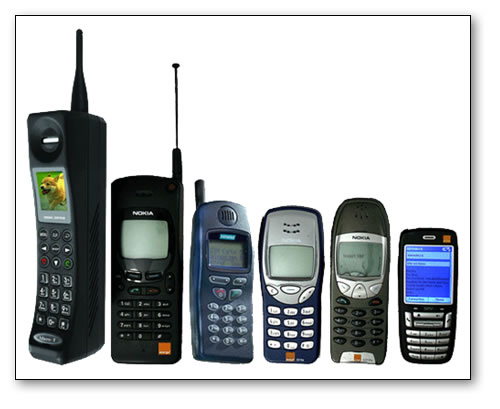x
- More +
Cell phones have drastically changed over time. When first introduced, they were technically called car phones because they were only available as a fixed phone inside a car. These phones were nothing like what we have now. Not only have the actual style of phones changed but service has changed, too. New features and larger […]
BY Editor
Posted On February 11, 2017
Cell phones have drastically changed over time. When first introduced, they were technically called car phones because they were only available as a fixed phone inside a car. These phones were nothing like what we have now. Not only have the actual style of phones changed but service has changed, too. New features and larger and better coverage areas have revolutionized this industry. In addition, cell phone plans have gone through a lot of transformation.
 First Plans
First PlansThe early car phones were pretty expensive. Not only was the phone costly but the expense of actually using the phone was outrageous. You had to pay for every minute you talked on the phone in addition to paying a base monthly charge. This made them something that was limited to only those with large disposable incomes.
Handheld cell phones were really huge and bulky when they first were introduced in the 1960s but weren’t really seen until the early 80s. These phones were meant to be used only in emergency situations. They didn’t hold a charge long and costs were still quite high. They weren’t really a mainstream product but people and companies saw the potential in them. This lead to new work and innovation in the field that eventually did bring cell phones into the mainstream.
As cell phone technology advanced so did. As smaller, more portable and usable cell phones were invented, cell phone carriers adapted to the changing landscape. They started erecting towers to make their cell phone service more widely available. They also developed plans, which usually required a two-year contract to be signed.
In these early years, there was no texting or data, so phones were just used for calls. Most calls were billed by the minute. You also still paid a monthly fee, and you were also charged extra if you went outside your carrier’s coverage area. This was called roaming. Roaming charges could add up quickly, so most people didn’t use their phones when they were roaming.
Eventually, companies introduced free nights and weekends. This meant that calls after a certain hour and on weekends, usually outside business hours, could be made for free without the per-minute rates. Many people would wait to make calls just to save money.
Companies also started offering free network calling. This meant anyone who went through the same carrier could call each other for free. This led to many people getting cell phone coverage through the same companies as their friends and family.
As new technology began being introduced, text messaging now had to be considered and billed for. Much like calling, texting was often billed on a per message rate. You could usually buy a bundle plan that gave you a certain rate for telephone calls and a certain number of free texts each month. If you went over your allotted amount, you then had to pay per text.
As data capabilities were introduced, cell phone plans had to change again. Data charges had to be added in. At this point, the costs of calling were mainly covered by the monthly fee and no longer charged by the minute. Texting was also moving towards being made mainly part of the monthly cost. This meant that plans generally offered unlimited calling and texting with extra charges being focused mainly on data usage.
Today plans are still changing. Many companies have moved away from the required contracts and now offer contract-free options. Most companies also offer prepaid options, which require no credit check and let users pay as they go. Calling and texting are covered by a monthly fee. Data is still the main point in billing and what most plans’ costs are based upon. It, too, though, is usually billed as part of the monthly fee, so you know what you get and how much it will cost up front. This is largely due to the fact that people use their cell phones more for accessing the internet than they do for actually communicating.
As people continue to change how they use their cell phones and different services are introduced, cell phone plans will keep changing to match demand. Companies are targeting the service that offers the most income potential. For someone looking for a good cell phone plan, making sure you understand the billing is essential. It can help you to find the plan that will best suit your needs.
TechReleased is one of the leading source of technology information and a newspaper which is dedicated for technology news and releases, it is one of the few online sources that provides all the technology news from the globe.



